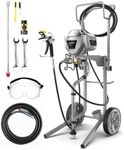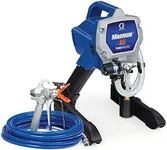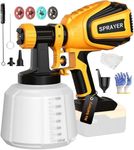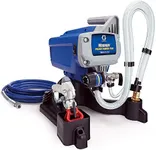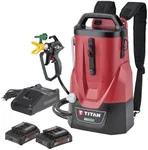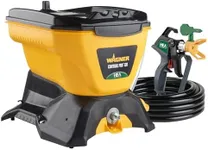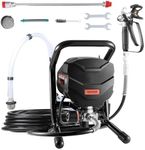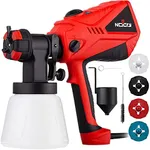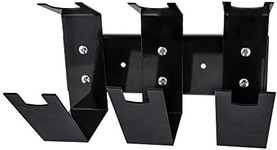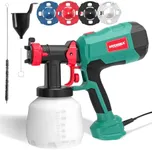Buying Guide for the Best Airless Paint Sprayers
Choosing the right airless paint sprayer can make a significant difference in the quality and efficiency of your painting projects. Airless paint sprayers are ideal for large surfaces and provide a smooth, even finish. To find the best fit for your needs, it's important to understand the key specifications and how they impact performance. Here are the main factors to consider when selecting an airless paint sprayer.Pressure Rating (PSI)The pressure rating, measured in pounds per square inch (PSI), indicates the force at which the paint is sprayed. Higher PSI allows for faster application and better coverage, especially on large surfaces. For small to medium projects, a sprayer with a PSI of 1500-2000 is usually sufficient. For larger projects or professional use, look for a sprayer with a PSI of 2500 or higher. Consider your project size and the type of paint you will be using to determine the appropriate PSI.
Flow Rate (GPM)The flow rate, measured in gallons per minute (GPM), determines how much paint the sprayer can apply in a given time. A higher flow rate means faster coverage, which is beneficial for large projects. For small to medium projects, a flow rate of 0.25-0.35 GPM is typically adequate. For larger projects or frequent use, a flow rate of 0.4 GPM or higher is recommended. Choose a flow rate that matches the scale of your projects to ensure efficient and effective painting.
Tip SizeThe tip size of an airless paint sprayer affects the width and thickness of the spray pattern. Different tip sizes are suitable for different types of paint and surfaces. Smaller tips (e.g., 0.011-0.015 inches) are ideal for thin materials like stains and lacquers, while larger tips (e.g., 0.017-0.021 inches) are better for thicker materials like latex paint. Consider the type of paint you will be using and the surface you will be painting to select the appropriate tip size.
Hose LengthThe hose length determines how far you can move around without having to move the sprayer unit. Longer hoses provide greater flexibility and convenience, especially for large or hard-to-reach areas. For small projects or indoor use, a hose length of 25-50 feet is usually sufficient. For larger projects or outdoor use, a hose length of 75-100 feet or more may be necessary. Choose a hose length that allows you to comfortably reach all areas of your project without frequent repositioning.
Motor PowerThe motor power, measured in horsepower (HP), affects the sprayer's ability to handle thicker paints and maintain consistent pressure. Higher horsepower motors can handle more demanding tasks and provide better performance. For light to medium-duty projects, a motor with 0.5-1 HP is typically adequate. For heavy-duty or professional use, look for a motor with 1.5 HP or higher. Consider the types of projects you will be undertaking and the thickness of the paints you will be using to determine the necessary motor power.
PortabilityPortability is an important factor if you need to move the sprayer frequently or work in different locations. Some sprayers come with wheels or are designed to be lightweight for easy transport. For small, indoor projects, a compact and lightweight sprayer may be sufficient. For larger, outdoor projects or professional use, a sprayer with wheels or a cart may be more convenient. Consider how often you will need to move the sprayer and the ease of transport when making your selection.
Ease of CleaningCleaning an airless paint sprayer after use is crucial for maintaining its performance and longevity. Some models come with features that make cleaning easier, such as quick-flush systems or detachable parts. For occasional use, a sprayer with basic cleaning features may be sufficient. For frequent use or professional applications, look for a sprayer with advanced cleaning features to save time and effort. Consider how often you will be using the sprayer and the importance of easy maintenance in your decision.
